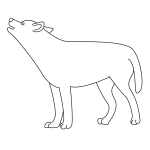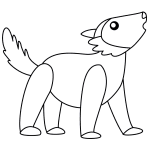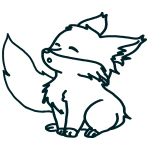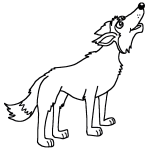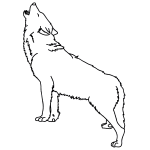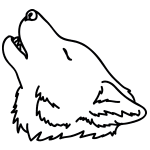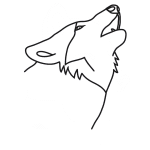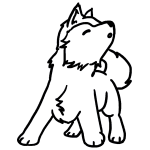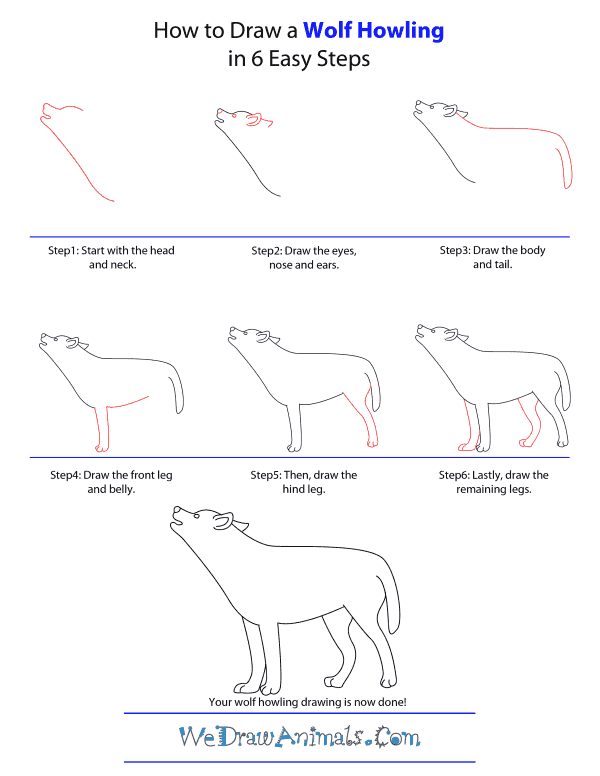In this quick tutorial you'll learn how to draw a Wolf Howling in 6 easy steps - great for kids and novice artists.
The images above represent how your finished drawing is going to look and the steps involved.
Below are the individual steps - you can click on each one for a High Resolution printable PDF version.
At the bottom you can read some interesting facts about the Wolf Howling.
Make sure you also check out any of the hundreds of drawing tutorials grouped by category.
How to Draw a Wolf Howling - Step-by-Step Tutorial
Step 1: To begin drawing your howling wolf, start with the head and the neck. Draw a curved line for the head, and since your wolf is howling, draw a slanted line for the neck.
Step 2: Draw the wolf's eye, nose and ears. For the eye, draw a small circle. For the nose, draw a curved line at the end of the face. Don't forget, the ears should be pointed backward while the wolf is howling.
Step 3: Now draw the body and the tail. The larger the wolf, the deeper the howl, so if you want your wolf to be a deep howler make his body large! Draw a line that curves straight down at the end of the body for the tail.
Step 4: Draw the front leg and the belly. Curve the belly line upward and leave it open at the end for the back leg.
Step 5: At the end of the belly, draw the hind leg. This leg is more muscular than the front leg, so it should have more of a curve.
Step 6: Last, add the finishing details by drawing the remaining legs. Color your wolf and put it in the forest, and it's ready to howl!
Interesting Facts about Wolf Howls
Wolves communicate in different pitches and tones, just like how humans speak. Sometimes wolves growl or bark-howl (which is a high-pitched bark followed by a brief howl). When they play, they chirp, squeal, yip, and yap. One of the most distinctive sounds wolves make is their howl.
Did you know?
- Although many people think that wolves like howling at the moon, that is actually not what they are doing. Wolves are nocturnal, so they are active at night. When they howl, they lift their heads to the night sky in order to be heard in the distance.
- A wolf’s howl can travel as far as six miles in a forest or up to 10 miles in clearer habitats.
- The larger the wolf, the deeper the howl.
- Leaders of the wolf pack, which are called alpha males, howl more often than the other wolves in the pack.
- Lone wolves do not howl as often as wolves in a pack. They stay much quieter because they do not want predators to find them, since they are by themselves and do not have protection from other wolves.
Wolves howl for many different reasons. They do so when they want to attract a mate. They also howl when they want to scare off a predator. Wolves howl when they want to let each other know where they are. Sometimes, they howl simply to say hi to one another!

